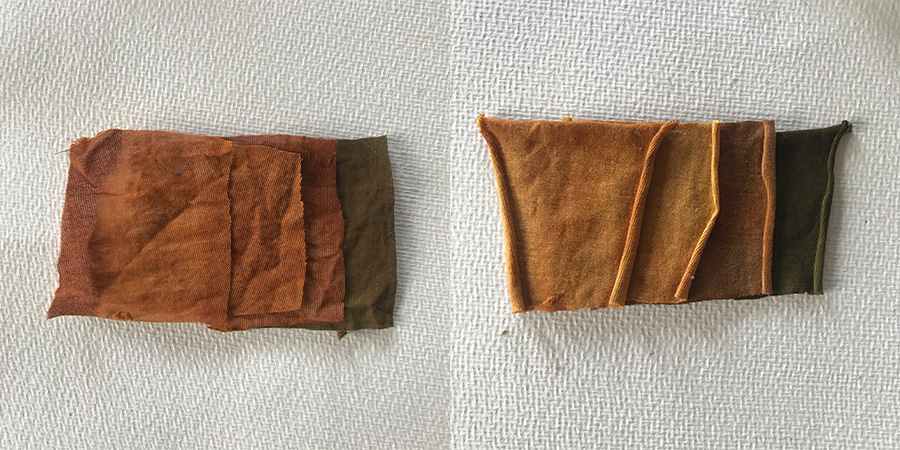The focus of this week is on exploring coloring alternatives to the current ones. As the dyeing of fibers and textiles is one of the most environmentally disastrous processes there is. Chemicals are released daily in rivers and nature destroying the environment around us. Very few options are being explored in this fast changing fashion, clothing and textile industry, and the list of chemical treatments is only expanding. Therefore we’ll explore alternative color sources and their processing. Ranging from plant based, insect base and bacteria based pigments.
Details of this weeks assignments
More information can be found on the textile academy program: Fabricademy Handbook: Class 4 - Biochromes
- Produce at least one natural dye or bacterial dye:
- Natural dye - modifying it’s color and mordanting it in different ways to dye at least 2 different categories of fibers
- Bacterial dye - Explored dyeing with bacteria of different fibers and/or bacteria
- Produce at least one botanical or bacterial ink:
- Botanical Ink - explore different materials, recipes and understand how to adjust them based on the ingredients
- Bacterial Ink - explore bacteria solvents and understand how to adjust or use the inks
- Document your recipes, the ingredients and process and if there have been changes, document your unexpected discoveries
- Name your materials, classify them by typology and display them in a systematic order of samples. EXTRA POINT Submit some of your swatches to the analog material library of your lab.
Useful links
- Biochromes 2020 - Inks & Pigments lecture by Cecilia Raspanti
- Biochromes workshop by Loes Bogers
- Recipes documentation Loes Bogers
Material needed
This week we work with a lot of different materials. We’re going to experiment and test our dyes on different medium.
Ingredients needed for our dye, inks and pigments
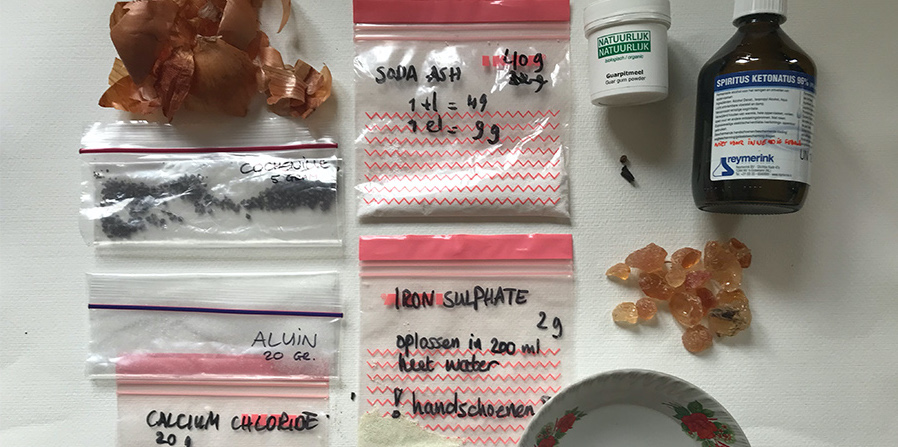
- Dye stuff (I will use yellow onion skins and cochineal)
- Alum
- Soda ash (sodium carbonate)
- Iron sulphate
- Cloves
- Calcium carbonate (if needed)
- White vinegar or lemon
- Denatured 96% alcohol
- Arabic gum
- Guar gum
Medium used for dye and ink experiments
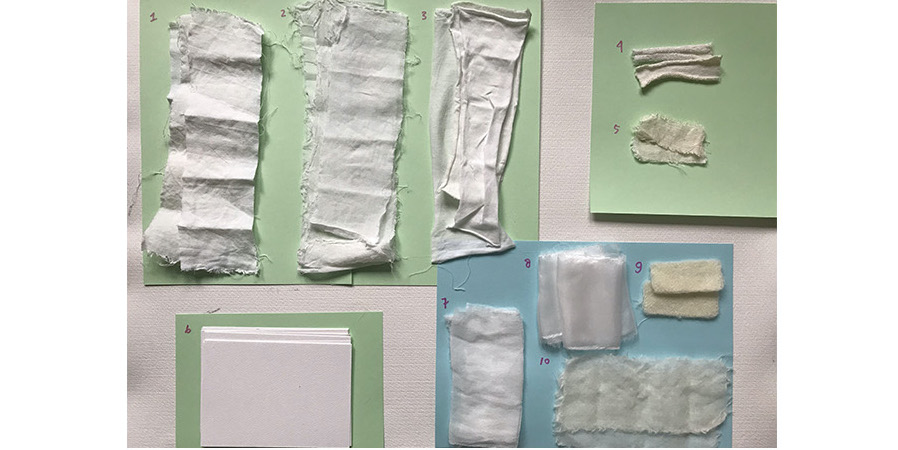
- Biological linen
- Voile cotton
- Lyocell (tencel)
- Hemp and cotton mix
- Hemp
- Watercolor paper
- Chiffon silk
- Pongee silk
- Wool
- Muslin
Tools and props needed

- Coffee filters
- PH-strips
- Pantyhose
- Household gloves
- Paint brush
- Pan
- Strainer
- Wooden spoon(s)
- Glass pots
- Bucket
- Thermometer
- Precision balance
- Funnel
- Mortar and pestle
- Tongs
- Droppers
Making Marker Ink
This week I work with yellow onion skins and cochineal as natural pigments. I combined the dye stuff (cochineal and yellow onion skin) with the denatured alcohol in a glass pot. Left it in there for 48 hours, shaking it once in a while.
Cochineal maker ink:
- 2 grams cochineal ground using mortar and pestle
- 45 grams denatured 96% alcohol
Yellow onion skin ink:
- 6 grams yellow onion skin
- 70 grams denatured 96% alcohol
I tested both inks using a brush and watercolor paper. The cochineal gives a nice magenta-purplish color. The ink made of yellow onion skin only shows after a while. In the beginning it just looks like it only wets the paper. But after a while when it’s dried there’s a very light yellow color.
Making Modifiers / color shifters
I followed the instruction from Loes: Recipe by Loes Bogers and tweak it at some points.
To test these modifiers I used my sample from the marker ink to see how the color shifts with these modifiers.
Modifier 1: Vinegar (Acid)
My first modifier is and acid and I used just plain white household vinegar. I tested the PH value with the PH-strips and it’s PH3.
Modifier 2: Soda Ash (Alkaline)
For the second modifier I used Soda Ash. I combine 3 grams of Soda Ash with 300 ml of hot water and mixed them in a jar.
Modifier 3: Iron Sulphate
The third modifier is based on iron sulphate. I combined 2 grams of iron sulphate with 200 ml of hot water in a jar and mixed it.
Preparing Silk samples
Loes already prepared most of our fabric samples however the silk we had to do ourselves. First step is to wash it. I washed it with water and a bit of vinegar and left the silk in this solution for about 24 hours.
Second step was to create the mordant based on alum, I used the descriptions provided by Loes.
- Dissolve 2 grams of alum in boiling water (100 ml)
- Add this together with 200 ml cold water in a pan
- Add the silk pieces (total weight 3 grams)
- Let it simmer for about one hour at 80 degrees Celsius
- After this let it cool down for another hour.
- Wring out and rise it with lukewarm water
The other samples Loes prepared are all scoured with soda and she used two different mordants so we can see what the difference is between; no mordant, mordant based on soy and mordant based on alum.
Dying fabric samples - water based
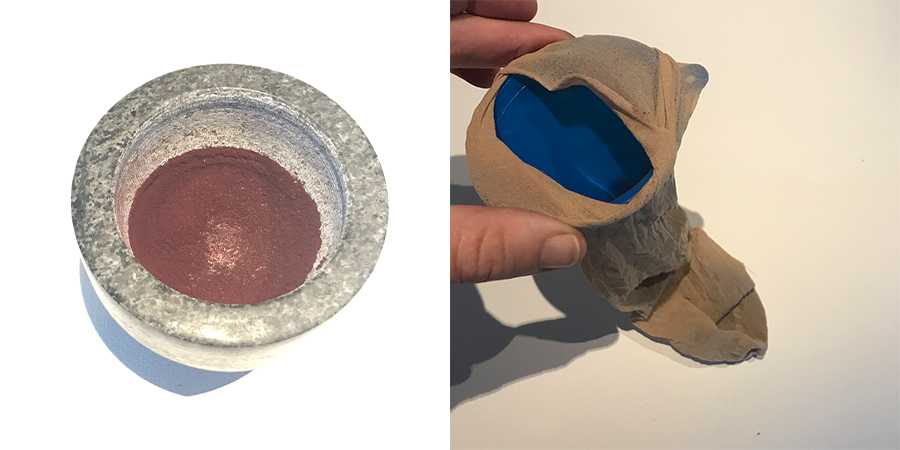
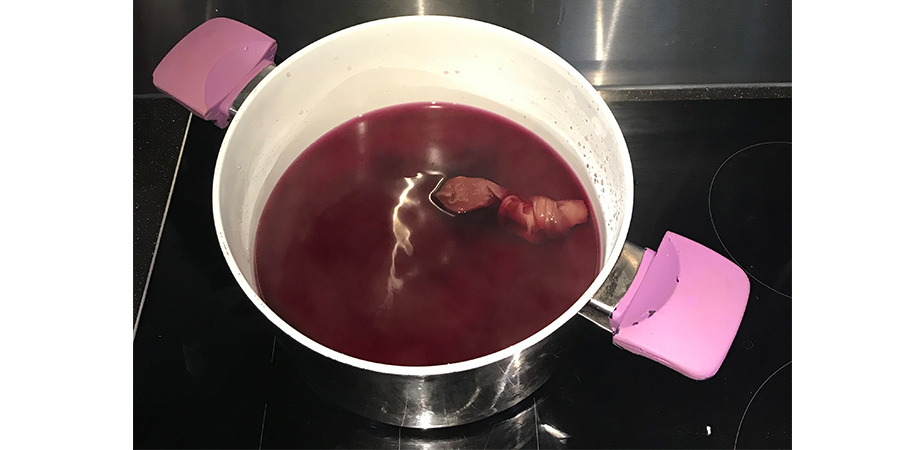
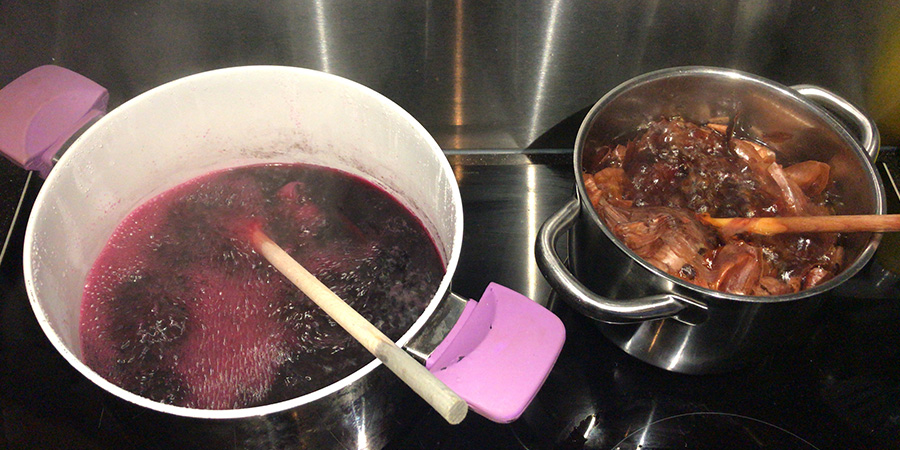
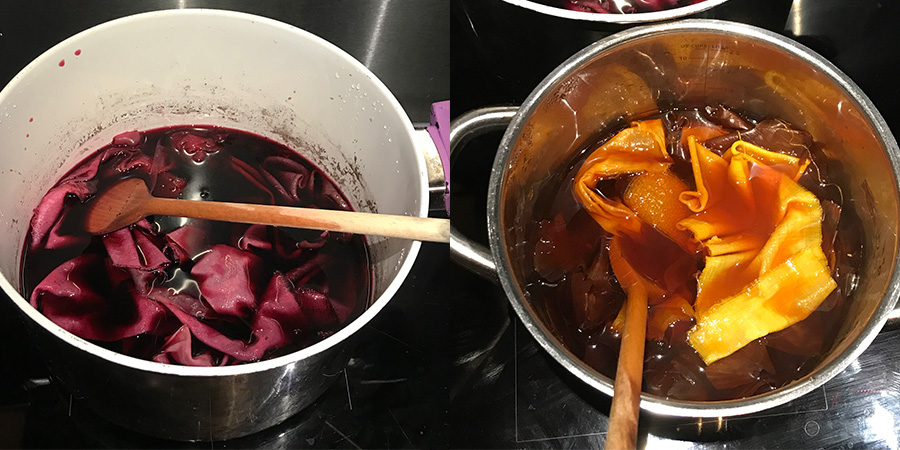
First impressions
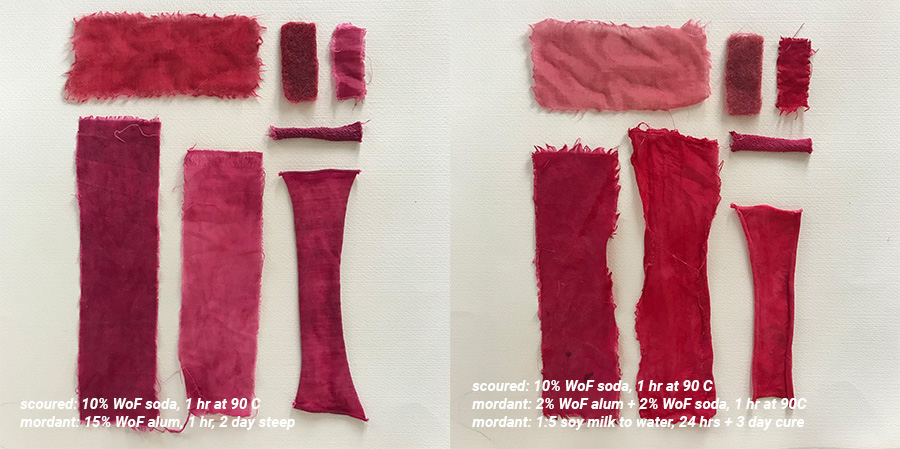
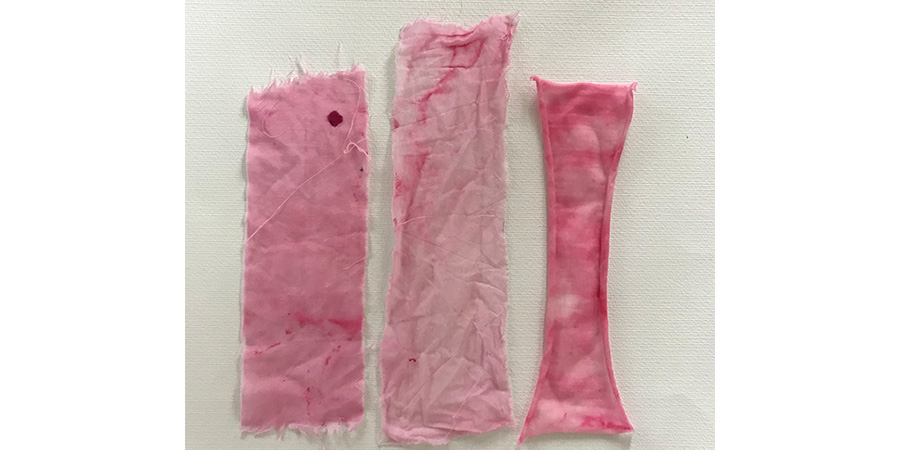
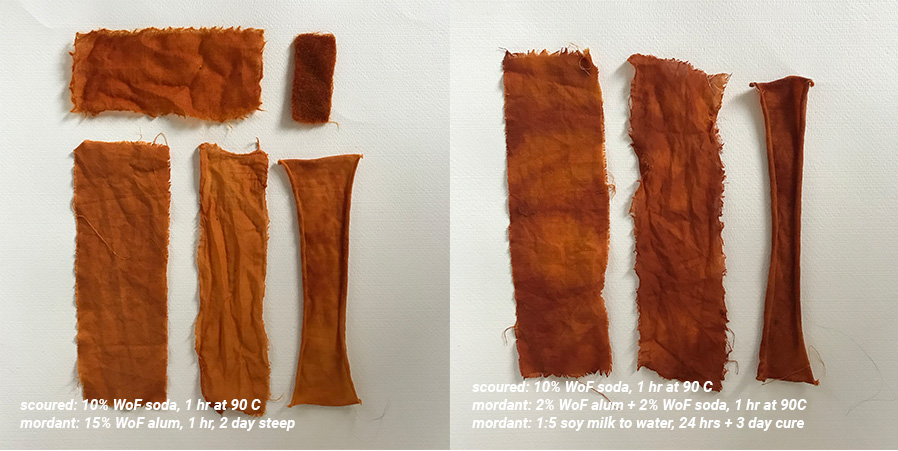
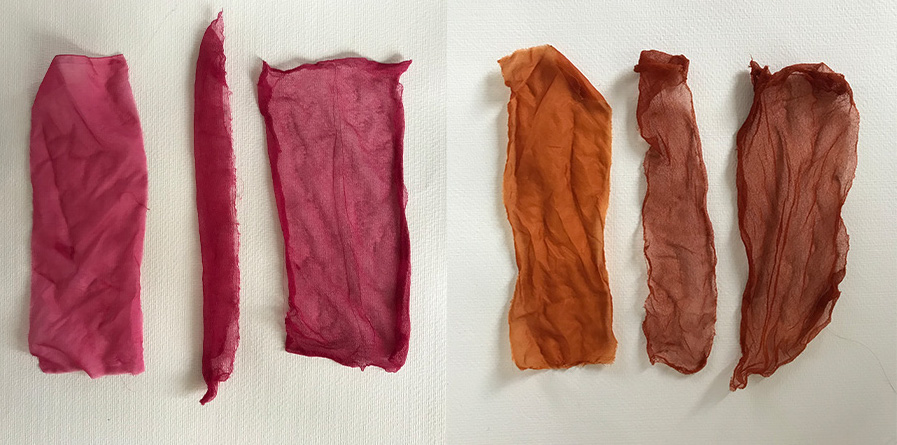
Using modifiers to color shift
I used the three different color shifter or modifiers to experiment with color changes. These are vinegar (acid) PH3; soda (alkaline) PH10; and Iron |Sulfate.
Mordant 1: 15% WoF Alum
This first set of samples are prepared with a mordant of 15% WoF alum.
Onion Skins
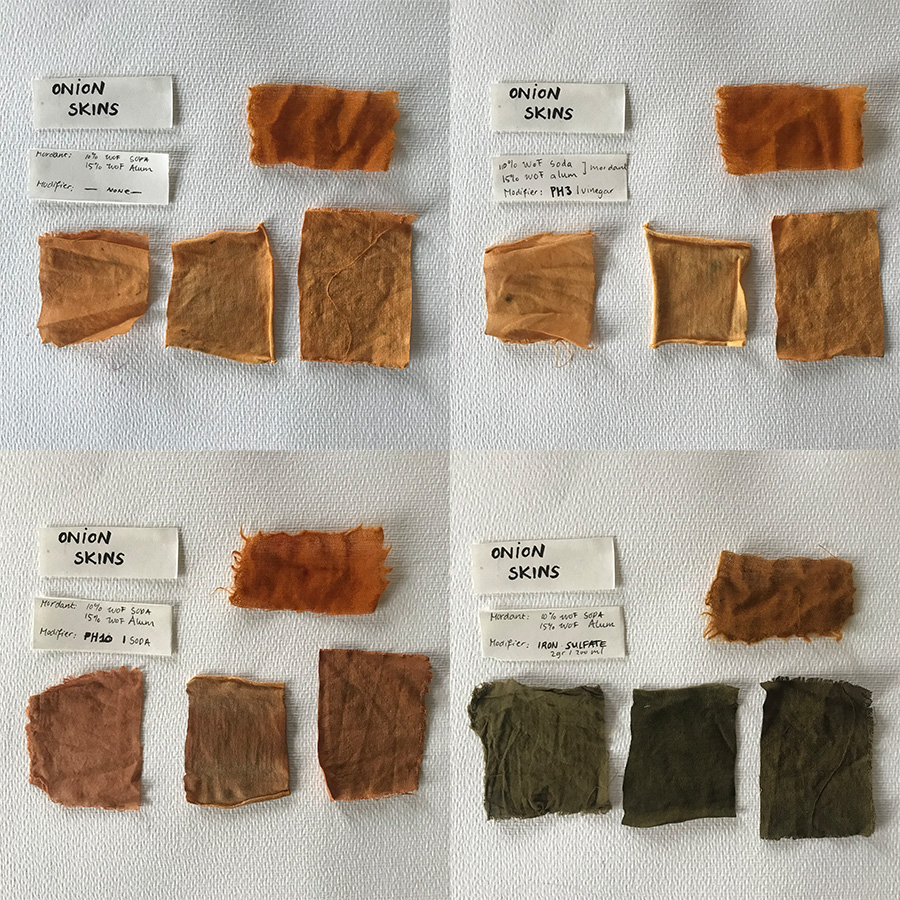
Cochineal

Mordant 2: 2% WoF Alum, 1.5 Soy to Water
The second stack of samples had a different mordant. This makes quite a difference in the end result and the intensity of colors. This version has 2% WoF Alum and 1.5 Soy to water.
Onion Skins

Cochineal
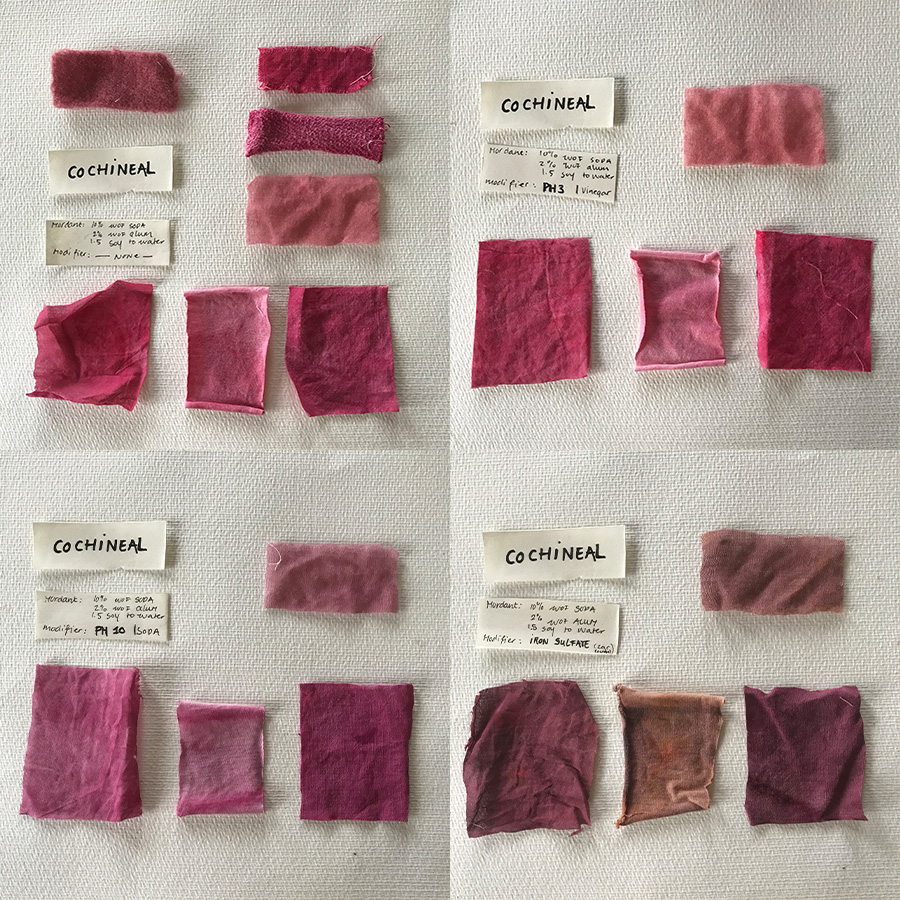
Mordant 3: No Mordant
The third batch had no mordant at all. And it’s interesting to see what the difference is and why it’s important to add a mordant for dyeing fabrics.
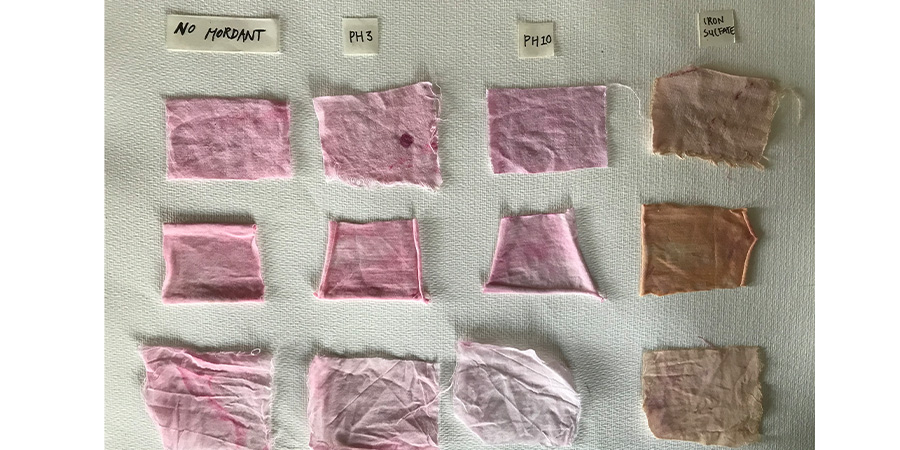
Water based ink
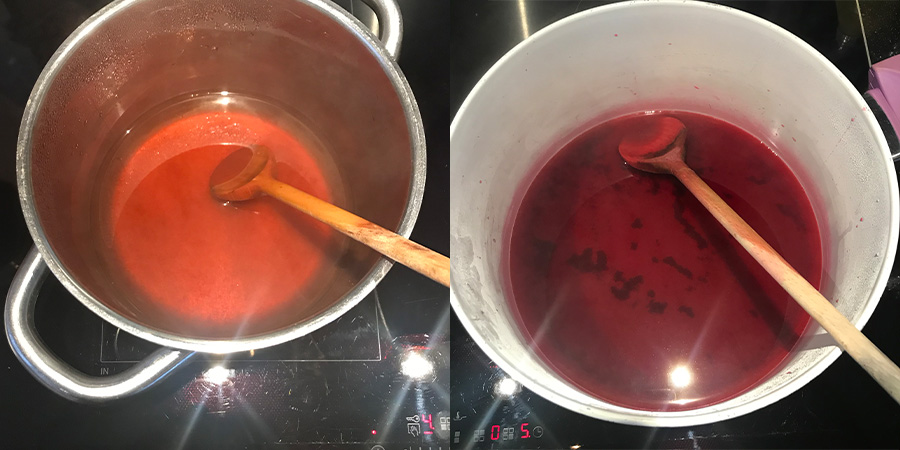
Precipitation making a pigment
Making textile and watercolor paint
Sample material archive
Cochineal
Mordant 1
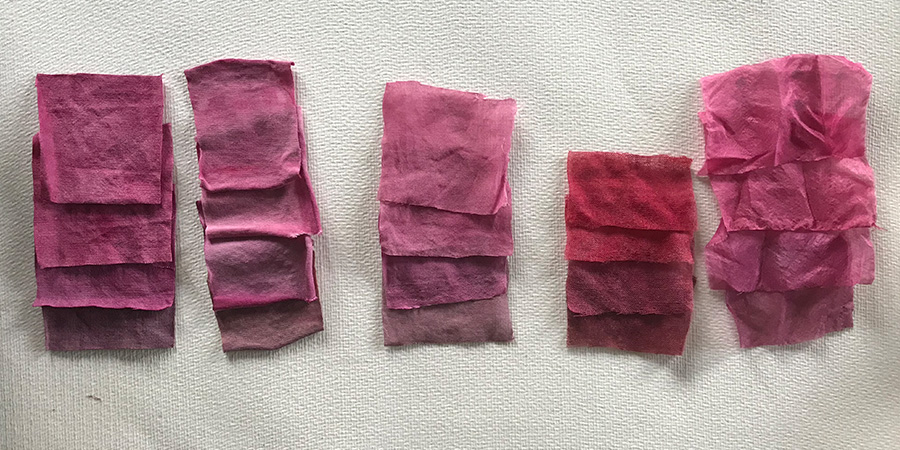
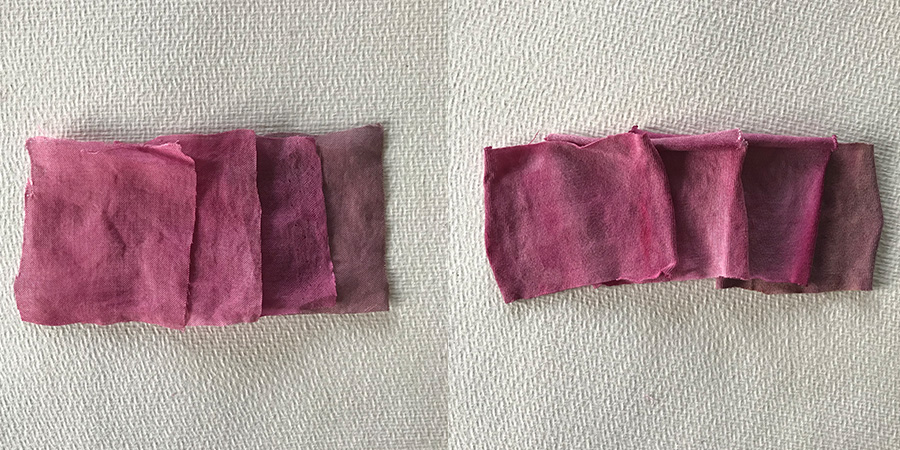

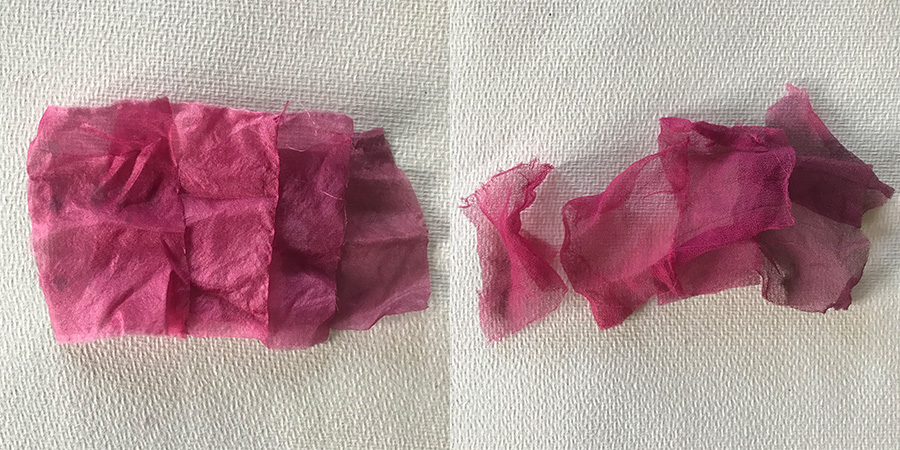
Mordant 2
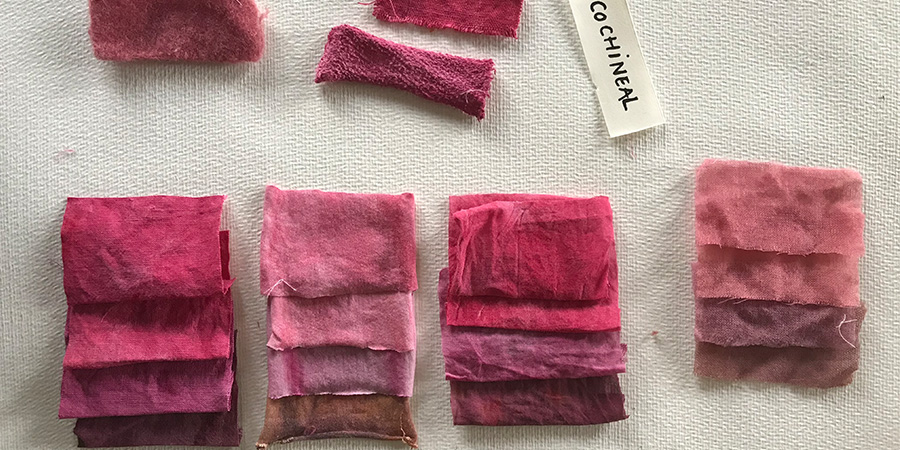


Onion Skins
Mordant 1
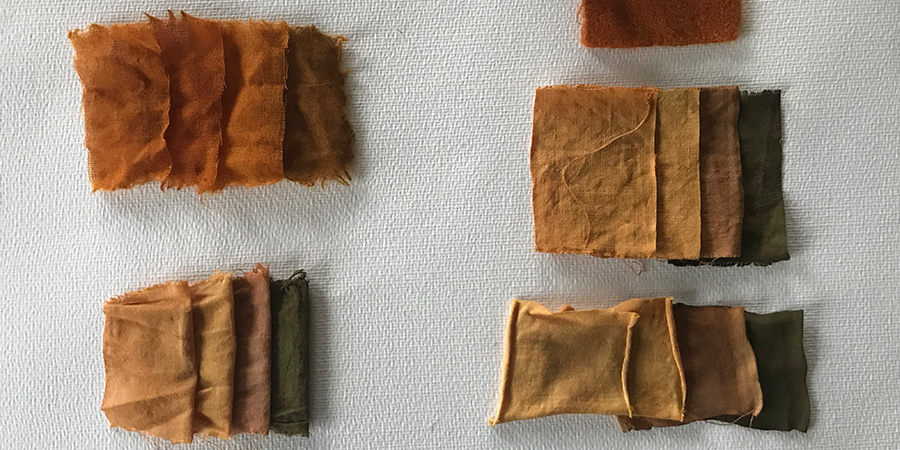

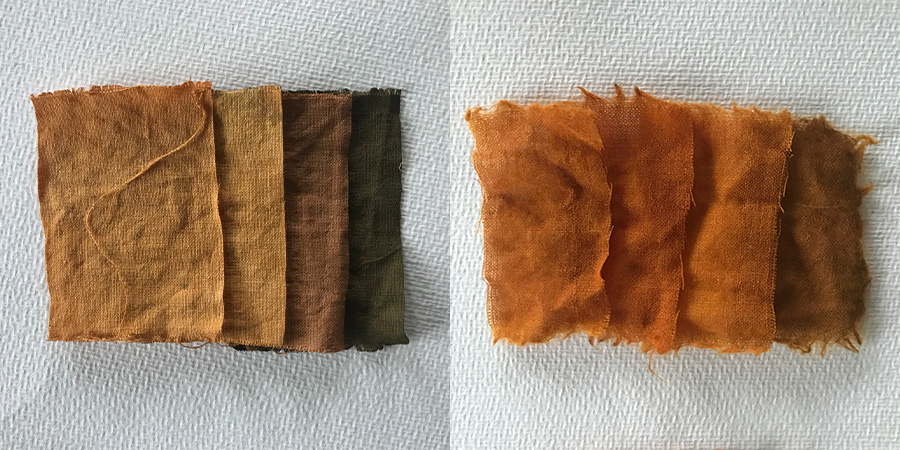
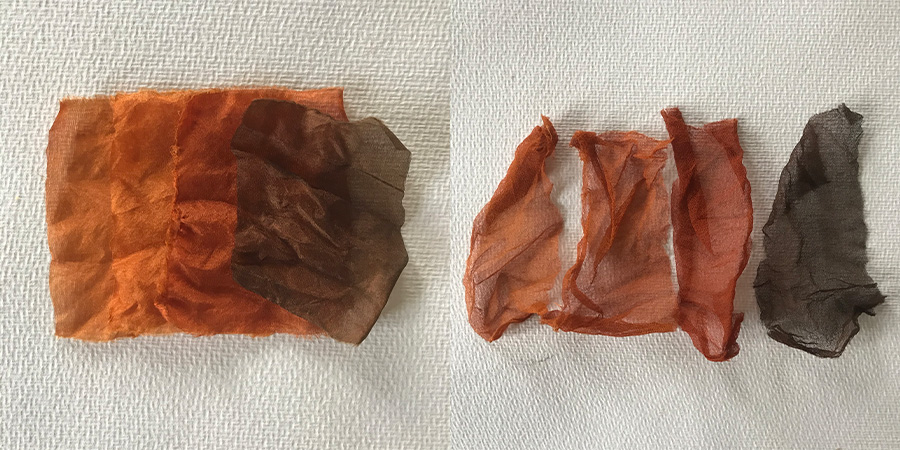
Mordant 2

